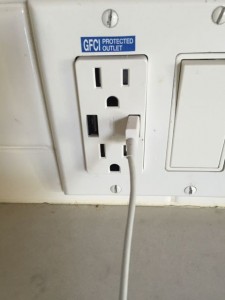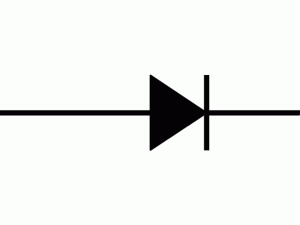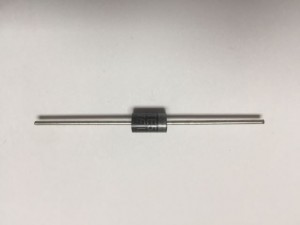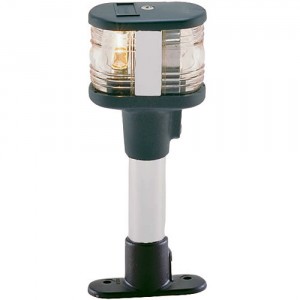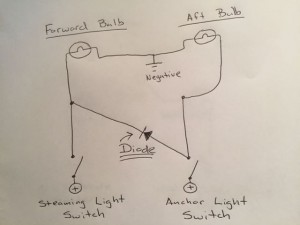Charge!: Chargers, Plugs, and Receptacles On Boats
Clark March 27th, 2017

The cigarette lighter plug/receptacle has long been the de facto standard to connect portable 12-Volt devices, and it sucks. Nobody smokes anymore. It’s bulky, insecure, makes poor electrical contact, and can’t carry high current. It’s got to be the only electrical connector in the history of electrical connectors with a compression spring that is constantly trying to break the connection.
I suffered many a night when the only difference between a good sleep and waking up in a pool of sweat, ravaged by mosquitoes, was a 12-Volt fan plugged into a cigarette receptacle above my bunk. If I so much as twitched, it disconnected. If the boat rocked it disconnected. It spontaneously disconnected, because the little spring was always trying to push the plug out of the receptacle. And this was with a stainless steel receptacle from West Marine and a Marinco plug, both purveyors of quality marine equipment.
The receptacle above my bunk looks all marine and stainless steely, but it wants to spit out plugs:
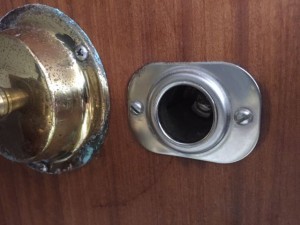
We’re stuck in this backward compatible nightmare simply because cars started coming with cigarette lighters way back when. There has to be a better way. Some enterprising company has to invent the better mousetrap, sell it to the world, and commit to it for twenty years or so, long enough for the world, or as least us boaters, to banish the cigarette lighter receptacle forever. Blue Sea Systems? Marinco? Cole-Hersee? I’m calling you out!
Currently there’s just not much out there to adopt, even if we all agreed to lop off all those cigarette lighter plugs and make a collective switch. There are lots of good in-line connectors (connectors that connect two pairs of wires together), but we don’t want some pigtail hanging out of our nav station: We want a streamlined, sexy little receptacle.
The closest thing I’ve found is the EmPower plug/receptacle, used on some airlines. It’s 15-Volt DC (close enough to 12) but limited to 75 Watts, and 75 Watts at 12 Volts is only 6 Amps, and that’s not much. I’m guessing the connector itself could take much more, but the in-flight systems limit it to 75 Watts so you can’t actually charge your laptop, which is apparently a fire hazard at altitude. Anyway, the EmPower plug/receptacle is barking up the right tree:
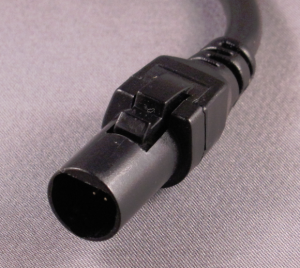
Some features this future dream receptacle and plug should have:
1. Compact: It can have a way smaller footprint than a cigarette lighter receptacle and the plug shouldn’t stick out nearly as far.
2. Polarized: Can’t be any way to plug it in backward and reverse the polarity.
3. Rated for 20-30 Amps: Should be able to plug in a 450-Watt portable inverter and have it work.
4. Secure: Yes, but don’t need to go overboard. I think a home 110 AC plug/receptacle is about right in this regard: You can vacuum the whole room and shake the cord every which way and the plug won’t pull out of the wall, but if you accidentally roll the vacuum cleaner down the stairs the plug will pull out. I don’t think there needs to be a locking mechanism, per se, as with a shore power cord, but if you’re using a plug-in spotlight in full combat mode, it shouldn’t come loose when you move about the cockpit (another personal pet peeve).
5. Circuit protection?: I say no. Many cigarette adapters have a fuse in the plug, but this isn’t the place for circuit protection. There’s not a circuit breaker in the plug for your toaster. The circuit supplying the receptacle should be protected by an appropriately-sized fuse or breaker, then any further protection should be in the device itself.
6. Easy install/adaptation, especially for the plugs: Installing the receptacles can take however long it takes, but installing the plug on a new device should be quick and easy. This way, if some of us are are to adopt this new dream connector and ditch our cigarette receptacles, and we buy some new device that comes with a cigarette plug, it should be a joy, rather than a chore, to lop it off and replace it with one of our dream plugs.
Anything else?
Back to reality and what we’re stuck with. Marinco and Blue Sea Systems make the only cigarette receptacles/plugs worth their salt. They’ve taken lemons, and made lemonade, so to speak. I have several of them aboard, and they really are better. The receptacles themselves are superior, in and of themselves, but used with their plugs it’s the best deal going. The plug twists and locks – sort of – into the receptacle, and at least holds the spring in compression and prevents unintended disconnects. Not cheap at about $30 for a receptacle/plug combo, and another $15-$20 for additional plugs:
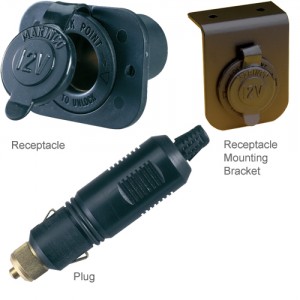
It’s worth having at least one of these receptacles, then the corresponding plugs for your mission critical devices. For me these are the portable inverter, the spotlight, the fan, and a 12-Volt vacuum cleaner.
USB connectors are now ubiquitous for charging all kinds of devices, and powering a few, but USB operates at 5 Volts, so forget about powering 12-Volt devices. Still, it makes sense to install one of the marinized USB receptacles for phones, iPads, and the like. Without one you’re looking at additional adapters and claptrap, or running an inverter, just to charge a phone:
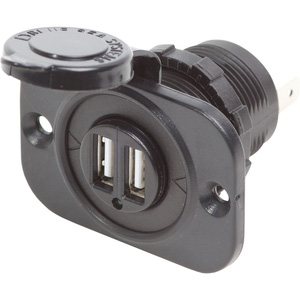
Or one of these combination panels, with the cigarette receptacle and the USB ports:
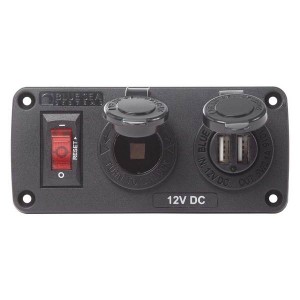
They sell combination AC outlet/USB sockets, so if you’re running AC all the time this is kind of nifty. I installed one at home, and it cleans up our charging station somewhat. We just need the cords now, without the adapters:
